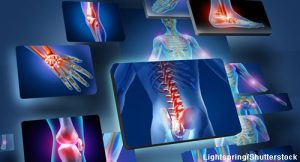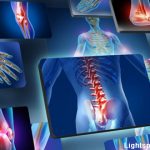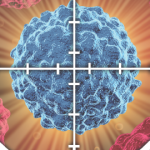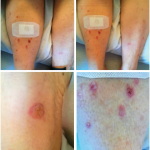 Two roads diverged in a cancer ward. One led to chemotherapy, and the other to immunotherapy. Although the latter is a much-celebrated route, it’s not without its drawbacks.
Two roads diverged in a cancer ward. One led to chemotherapy, and the other to immunotherapy. Although the latter is a much-celebrated route, it’s not without its drawbacks.
True, if one had to choose, it’s preferable to contend with a musculoskeletal issue rather than an oncological one. However, the drugs used in immunotherapy—immune checkpoint inhibitors (ICIs)—may cause serious adverse effects, with the most common rheumatic condition being ICI-induced inflammatory arthritis.
Research from the Johns Hopkins University School of Medicine, Baltimore, set out to examine musculoskeletal ultrasound findings in patients with ICI‐induced inflammatory arthritis. The study, “Sonographic Findings in Inflammatory Arthritis Secondary to Immune Checkpoint Inhibition: A Case Series,” was published in the July 2019 issue of ACR Open Rheumatology. It’s the first systematic effort using musculoskeletal ultrasound to evaluate patients with ICI‐induced inflammatory arthritis and describe its related imaging features.1
Cancer Cells Play Hide & Seek with the Immune System
Jemima Albayda, MD, is the director of the Musculoskeletal Ultrasound and Injection Clinic and assistant professor of medicine in the Division of Rheumatology, Johns Hopkins. She says, “With ICIs, we now have the ability to harness the immune system in the fight against cancer, something that has long been the dream of oncologists. These impressive drugs, which are effective even in the most dire cases, are now FDA approved.
“Although these drugs have done wonders for many people, essentially unleashing the immune cells so they can block the checkpoints cancer cells use to shut down the immune system, other problems may arise. Letting the immune system ‘rip’ can cause unusual manifestations that we still do not fully comprehend. Problems have arisen in every organ; and although the larger side effects—colitis, gut pain, etc.—are easily detected, joint pain is not something people always pay attention to,” she says.
Education
Laura Cappelli, MD, MHS, is an assistant professor of medicine at the Johns Hopkins University School of Medicine, Division of Rheumatology, and a faculty member of the Johns Hopkins Arthritis Center. Her research focuses on understanding the mechanisms and treatment of ICI-induced rheumatologic complications. “At Johns Hopkins, we have an ICI team working on educating oncologists so they will be alert for any joint issues and refer these patients to us in rheumatology. Many people initially think, ‘Oh, it’s just run-of-the-mill joint pain.’ But often, there’s significant functional impact and joint damage.”
For the study, Drs. Albayda and Cappelli identified patients they had seen with ICI-related arthritis who also had ultrasound imaging as part of their work-up. They conducted a retrospective chart review to obtain demographics, oncologic history, clinical presentation, imaging and synovial fluid results.
Dr. Cappelli says, “In this case series, we were able to quickly identify patients who were having these symptoms. ICI-induced inflammatory arthritis is an unusual disease that does not act like rheumatoid arthritis [RA] or any other primary autoimmune diseases, and many questions remain unanswered. We determined that the most common finding was active synovitis, followed by inflammatory tendon involvement. Early erosions also hint at the aggressiveness of this disease.”
This work, supported by the National Institutes of Arthritis and Musculoskeletal and Skin Diseases and the Jerome L. Greene Foundation, involved nine patients with a total of 18 joint regions assessed. The knees were the most commonly imaged joint followed by the hands, wrists, feet and ankles. Synovitis was seen in 12 of the 18 joints, and tendon involvement was seen in 13 of the18 joints.
Don’t Address the Heart & Gut Alone
Dr. Albayda says, “If there is a painful joint involved, then it’s important to do further imaging to determine what structures are involved. Ultrasound is inexpensive, and most rheumatologists have routine access to this imaging. Taking the time to do these assessments is important because there is still so much we don’t know about this disease. Sometimes, the imaging may help point a subset of the disease. In the future, we may find that if there is additional tissue or synovial proliferation that looks like standard RA, then using treatments that target this [condition] may be more helpful. Some tendon and bone abnormalities mimic spondyloarthritis, and if this is the primary finding, then targeting these pathways may be beneficial.”
Indeed, says Dr. Cappelli, multiple studies indicate that joint pain is one of the more common reactions to immune checkpoint inhibitors. She says, “There have been a couple of [factors] that have impeded the study of ICI-induced inflammatory arthritis. One was that the incidence of arthritis was not well captured in the original clinical trials. The other is that this type of arthritis can be a later development as compared with other side effects.”
For this disease, good collaboration is vital. “If a patient has joint pain and swelling that emerges after the initiation of ICI therapy, then schedule an appointment immediately with a rheumatologist. Rheumatologists can augment oncological treatment by helping to determine whether symptoms are ICI-induced inflammatory arthritis, an alternate cause of joint pain or the progression of cancer. Making things more complex is that, even after someone has completed treatment and has been declared cancer-free, they can still get ICI-induced inflammatory arthritis. While screening for more serious drug-associated problems that affect the heart and gut, don’t forget about the joints,” Dr. Cappelli says.
“Ours was a limited study of patients who we saw in clinic. Ideally, we would like to be able to study a larger group and systematically use ultrasound for evaluation and scoring. Although it was a small group, we thought it was important to publish these findings to emphasize the unique features of this kind of arthritis,” she says.
Dr. Cappelli’s request to her rheumatology colleagues? Consider using ultrasound during your evaluations so that everyone can learn from one another’s collective experience.
Elizabeth Hofheinz, MPH, MEd, is a freelance medical editor and writer based in the greater New Orleans area.
Reference
- Albayda, M, Dein, E, Shah, AA, Bingham, C, Cappelli, L. Sonographic findings in inflammatory arthritis secondary to immune checkpoint inhibition: A case series. ACR Open Rheumatology. 2019 Jul; 1(5):303–307.





